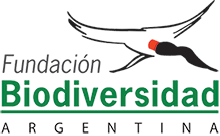Las Mesillas Protected Wildlife Area, Province of Córdoba. Argentina
In the year 2022, thanks to a donation from World Land TrustFundación Biodiversidad Argentina was able to acquire the estate Las Mesillas in the province of Córdoba, with the aim of conserving 5,411 hectares of forests of the Dry Chaco adjoining the Traslasierra (Pinas) National Park.
The ASP Las Mesillasis a nature reserve of Fundación Biodiversidad Argentina located within the Biogeographical Corridor of the Dry Chaco, in the northern zone of the province of Córdoba bordering the province of La Rioja, and covers 5,411 hectares of the Dry Chaco region
The Dry Chaco comprises xerophilous forests with open thickets, salt lakes and dunes, that extend in the foothills of the sierras of northwestern Córdoba, east of Catamarca and La Rioja, north of San Luis, and south of Santiago del Estero.
Although they represent only 15.2% of our country, the Dry Chaco is one of the most diverse biomes, it is the habitat of more than 3400 species of plants, 500 species of birds, 150 species of mammals, 120 species of reptiles and about 120 species of amphibians.
The creation of ASP Las Mesillas forms part of our strategy for the conservation of an area adjoining Traslasierra (Pinas) National Park that will act as a buffer zone of the aforementioned National Park
In addition, we have set ourselves the objective of creating a Biological Corridor between the Traslasierra National Park (Pinas) and the Chancaní Provincial Natural Park and Natural Forest Reserve, both protected areas of the province of Córdoba united by private properties in different states of conservation.
Field studies carried out by Fundación Biodiversidad Argentina as well as data obtained with trap cameras reveal the richness of ASP Las Mesillas. trampa revelan la riqueza del ASP Las Mesillas.


Importance of the Chaco Region
The Chaco Region is the second largest forest mass in the continent (after Amazonia) and 60% of it is found in Argentina. It is a very important habitat for conservation, mostly because of its high diversity of flora and fauna, as well as for its cultural heritage, since it is the territory of over 20 indigenous groups of Argentina.
Although it represents only 15.2% of our country, the Dry Chaco is one of the most diverse biomes. It is the habitat of more than 3,400 species of plants, 500 species of birds, 150 species of mammals, 120 species of reptiles, and some 120 species of amphibians.
These forests capture and reduce the impact of flooding when heavy rains occur. They also provide all types of products for its inhabitants, such as wood, firewood, edible fruits, medicinal herbs, vegetable fibers for clothing, shade, animal proteins and fodder for their livestock.
In the year 2003, the province of Córdoba created the Biogeographical Corridor of the Dry Chaco, which covers an area of approximately 1,000,000 hectares in the northwest of the province, with environmental continuity in the provinces of La Rioja, San Luis and Santiago del Estero. This vast region includes some national and provincial protected areas, which act as centers of conservation, but most of the lands are privately owned.
The participation of the private sector in its conservation is one of the main challenges for the future, mainly in terms of guaranteeing the environmental connectivity of the forest masses.
Threats
The Dry Chaco has historically suffered the extraction of hardwood tree species for their commercialization. This was generally followed by a change in the use of the land for agricultural-livestock rearing purposes, which provoked a loss of around 12,000,000 hectares of forest in the past 40 years. The continuous advance of the agricultural frontier is the main threat to the species that inhabit the Dry Chaco, due to habitat loss and fragmentation.
The forestry activity carried out in the form of mining is another strong threat to the region. The extraction of wood, firewood, and coal, without sustainable management plans for the tree species and lack of controls lead to excessive logging of the most valued species. This has generated that the forest remnants that we see today are impoverished and degraded samples of the original woods.
Poaching is a serious problem for the various species of the Dry Chaco, some of which are at risk of extinction, such as the Chacoan peccary (Parachoerus wagneri) and the Chacoan guanaco (Lama guanicoe). The large size of these properties, the low number of its inhabitants, the isolation, and cultural aspects of the region makes poaching very difficult to prevent and control.
The clearing or thinning for planting of alien grass species in the context of livestock raising is currently an important threat to the remnants of the Chaco Forest.
The advance of unplanned urbanization on native forest areas is a new current threat, especially in booming tourist areas and in the surroundings of large cities and towns.






ASP Las Mesillas
The ASP Las Mesillas is a nature reserve of Fundación Biodiversidad Argentina that is located within the Biogeographical Corridor of the Dry Chaco, in the northern zone of the province of Córdoba bordering the province of La Rioja, and comprises 5,411 hectares within the Dry Chaco region
The strategic location of the ASP Las Mesillas makes it a natural part of the Dry Chaco Biogeographical Corridor and a key conservation area of the Dry Chaco Biological Corridor, acting as a northern buffer zone for the Traslasierra (Pinas) National Park, to ensure the permanence of the key species of the ecosystem of the Dry Chaco such as the Chacoan peccary, the Chacoan guanaco and the crowned eagle.
In the lands of the Traslasierra (Pinas) National Park and the ASP Las Mesilllas we can find an important diversity of plants, with more than 50 species, among which mention may be made the white quebracho (Aspidosperma quebracho-blanco) and the carob trees (Prosopis spp.) for their economic importance and strongly rooted in the culture of the inhabitants of the area. It is estimated that over 200 species of birds inhabit the area, among them, the crowned eagle (Buteogallus coronatus), the salt nun (Neoxolmis salinarum), and a relictual population of the blue-fronted parrot (Amazona aestiva), among others.
The ASP Las Mesilllas functions as a buffer zone for Traslasierra (Pinas) National Park, increasing the protected area for benefit of the 35 species of mammals present. It protects habitats that are little represented in the National Park such as saline areas, habitats for many threatened species that have been detected by their footprints, feces, bone remains and/or through the use of trap cameras, like the Chacoan guanaco (Lama guanicoe), the Argentine boa (Boa constrictor occidentalis), the puma (Puma concolor) and the Chacoan peccary or taguá (Parachoerus wagneri).
The principal objective of the conservation of this nature reserve is the preservation of the habitat of the Dry Chaco, which houses a high number of tree species, insects, birds, and mammals, but from which only 1.6% of the total surface area is under some type of protection in Argentina.
The Chaocoan guanaco (Lama guanicoe), is a conservation priority of the nature reserve, since it is the last population of this guanaco in Argentina.
The Chacoan peccary or taguá is another conservation priority of the reserve, and of the country, since it is an endemic species of the Dry Chaco. It has been classified as endangered, at the national and international level, which generated a global Action Plan headed by the IUCN and its group of specialists in 2016.





